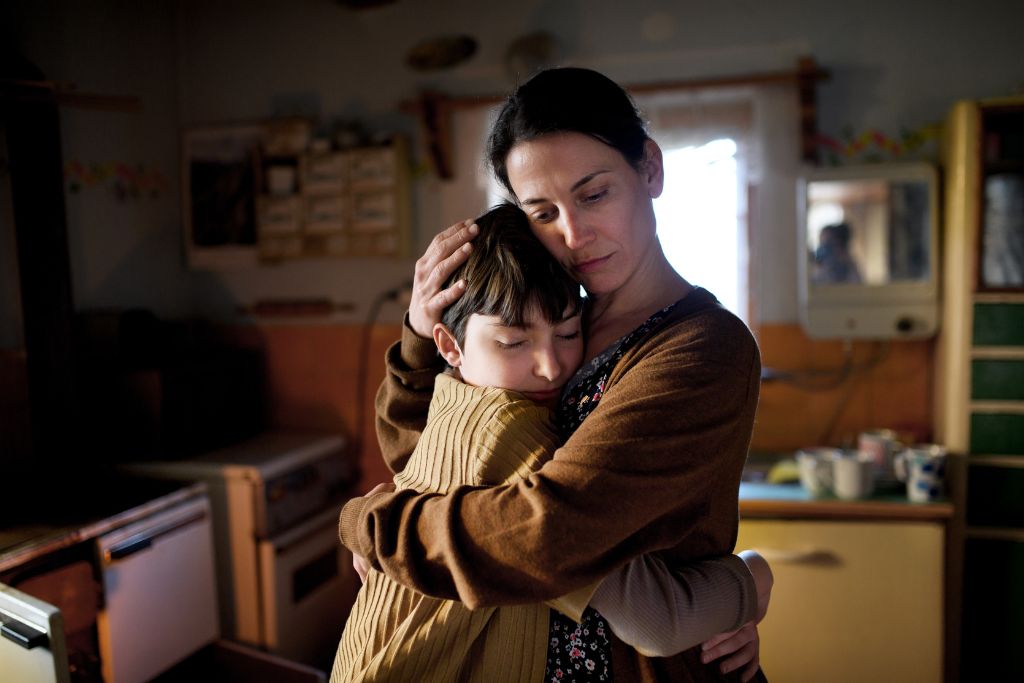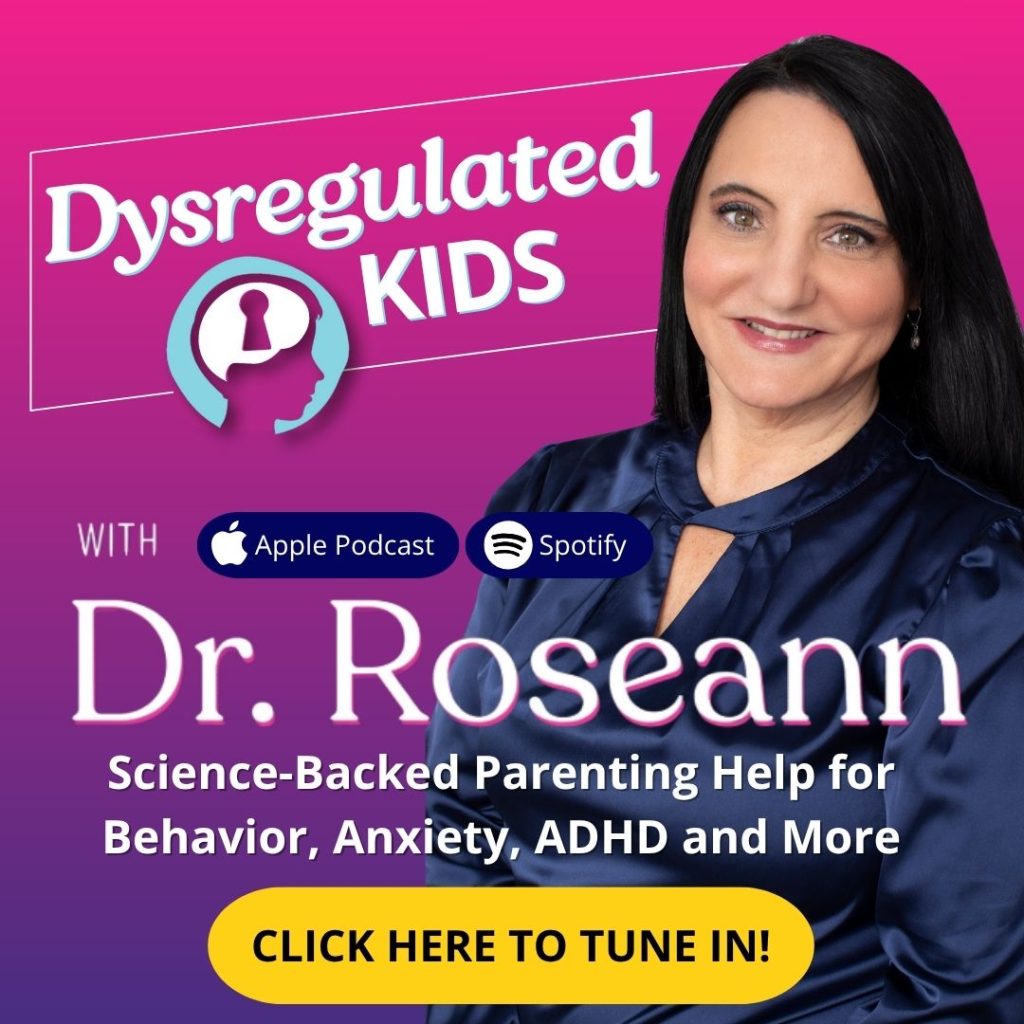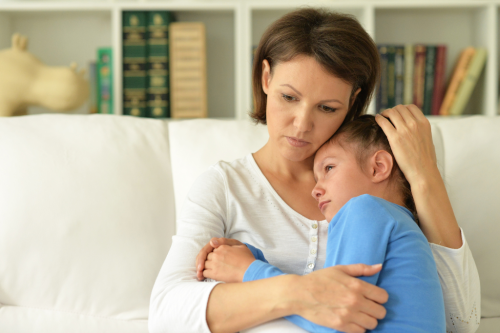Estimated reading time: 6 minutes
When your child’s meltdowns become the background noise of daily life, it can feel like chaos rules your home. If you’ve started noticing how dysregulation affects family dynamics, you’re already tuned into what your family needs. This isn’t about “bad behavior” or poor parenting—it’s your child’s nervous system asking for help.
In this guide, we’ll explore how dysregulation ripples through the family and share practical steps to bring more calm, connection, and hope into your everyday life.
What is Dysregulation and How Does it Show up at Home?
Dysregulation happens when your child’s nervous system gets overwhelmed and they lose the ability to manage their emotions, behavior, or attention. Think of it like their internal alarm system getting stuck screaming “EMERGENCY!” even when there’s no real danger.
Here’s what this looks like in real life: emotional dysregulation might be a 45-minute meltdown because you gave them the blue cup instead of the red one. Behavioral dysregulation shows up as impulsivity, aggression, or your child completely shutting down when they’re overwhelmed. Your child’s behavior is a clue, not a problem—it’s their nervous system trying to tell you something.

Alice, a mom in our community sums it up perfectly, “Our house is like a popcorn machine stuck on turbo. One kernel pops and the whole bowl explodes.” So deep breaths mom and dads. Even popcorn cools down with the right tools.
How Does One Dysregulated Child Impact the Rest of the Family?
When one child struggles with self-regulation, the entire family system shifts into survival mode. This creates what we call “family dysregulation“—where everyone’s nervous systems are constantly activated.
I know it’s exhausting. Family stress escalates because you’re always anticipating the next meltdown, siblings feel invisible, and normal family activities become sources of anxiety instead of joy. The unpredictability keeps everyone in a state of hypervigilance that wears you down to your core. But I’m with you in this—we’re going to figure out how to help your whole family regulate together.

How Does Dysregulation Affect Sibling Relationships?
Sibling relationships often take the biggest hit when dysregulation is running the show at home. I see this constantly in my practice—neurotypical siblings develop what we call “sibling syndrome,” which is basically a mix of resentment, anxiety, and having to grow up way too fast.
The sibling who isn’t struggling often becomes invisible because all the attention goes to managing the crises. They start believing their problems aren’t “big enough” to matter, which breaks my heart every time I hear it. You need to meet your child where they’re at—and that includes the sibling who seems “fine.”
Common sibling challenges:
- Parentification: Taking on adult responsibilities to help manage family stress
- Resentment: Feeling angry about missed opportunities and attention
- Anxiety: Worrying about triggering their sibling’s meltdowns
- Guilt: Feeling bad for being “easier” than their struggling sibling
- Behavioral regression: Acting out to get parental attention
Heather, a mom I work with, shared this with me: “My 10-year-old daughter started having her own meltdowns after months of watching her brother’s explosive episodes. She told me she didn’t know how else to get my attention. It broke my heart to realize how much she’d been holding in.”
What Happens to the Parent-Child Bond When Dysregulation is Constant?
Chronic dysregulation can strain the parent-child bond in ways that might shock you, even when you love your child with every fiber of your being. The constant stress of managing behavioral challenges can trigger your own dysregulation, creating negative cycles that feel impossible to break.
So many parents tell me they feel like they’re failing their child, despite trying everything under the sun. This leads to what I call parental burnout—and the guilt and resentment that come with it are completely normal responses to chronic stress. You’re not a bad parent. You’re a human being under incredible pressure.
You can’t help your child regulate if you’re not regulated yourself. That’s not selfish—it’s essential.
The attachment impact:
- Hypervigilance replaces natural, relaxed interactions
- Negative interaction cycles where most communication involves correction
- Emotional exhaustion limiting parents’ capacity for connection
- Trauma responses in both parent and child during intense episodes
- Loss of joy in the relationship as survival mode takes over
How Does Dysregulation Affect Marriages and Co-parenting?
Marriage and co-parenting gets tested when dysregulation takes over your household. I’ve been there, and it’s rough. Partners disagree on approaches, blame each other for their child’s struggles, or simply have no energy left for their relationship after managing daily chaos.
The statistics are tough to hear. Families raising children with behavioral and emotional challenges experience higher levels of marital stress and an increased risk of separation or divorce. Risk for significant child and adolescent adjustment problems increases by a factor of 1.5 to 2 when parents divorce or separate, compared to children in stable families.
Common marital challenges:
- Disagreement on discipline approaches and interventions
- Unequal caregiving burden leading to resentment
- Financial stress from treatments and missed work
- Social isolation as a couple due to unpredictable child behavior
- Intimacy challenges from chronic exhaustion and stress

Dr. John Gottman’s research shows that couples who maintain their connection during high-stress parenting situations are more resilient. He emphasizes: “The quality of the parents’ relationship directly impacts their ability to support their child’s emotional development.”
Feeling overwhelmed? You’re not alone. Grab our free Regulation Rescue Kit for science-backed tools to help your child—and your family—find calm.
This too shall pass, and these strategies will light the way.
Can Family Dynamics Heal Even When Dysregulation is Ongoing?
Family healing is absolutely possible, even while you’re still working through your child’s regulation challenges. You don’t have to wait for your child to be “fixed” to start feeling better as a family.
It’s a marathon, not a sprint, but healing happens when families learn to stay regulated themselves. When you create that calm environment, you’re actually giving your child’s nervous system exactly what it needs to develop better self-regulation skills. No matter what you’ve been through, it’s not too late to make changes.
Healing strategies that work:
- Co-regulation practices where parents model calm nervous system states
- Family rituals that create predictability and connection
- Individual support for each family member’s unique needs
- Professional guidance from therapists who understand dysregulation
- Community connection with other families facing similar challenges
Research by Dr. Bruce Perry shows that “regulation comes through relationship.” When families prioritize connection over correction, everyone’s nervous system begins to heal.
What Are Some Immediate Steps I Can Take to Create Calm at Home?
Here’s a practical tip for you today: creating calm at home starts with small, consistent changes that signal safety to everyone’s nervous system. Remember, your child’s behavior is a clue, not a problem—they’re telling you their brain needs help, not punishment.
The first step is to pause and breathe. I know that sounds too simple when your child is having a meltdown, but regulation is leadership, not control. When you model calm, you help your child’s nervous system settle too.
Start with these regulation-friendly changes:
Environmental modifications:
- Lower lighting and reduce noise during transition times
- Create quiet spaces where anyone can retreat when overwhelmed
- Use visual schedules to increase predictability
Connection practices:
- Implement 10 minutes of one-on-one time with each child daily
- Practice family breathing exercises or gentle movement
- Establish consistent, calming bedtime routines
Communication shifts:
- Use “co-regulation language”: “I see you’re having big feelings. Let’s breathe together.”
- Validate emotions before addressing behavior: “You’re really frustrated about this.”
- Focus on felt safety: “You’re safe. We’re going to figure this out together.”

Remember what I always say: when we focus on calming the nervous system first, behavioral compliance often follows naturally. You’re addressing the root cause—dysregulation—not just trying to manage the surface behaviors.
Your Family Can Heal
I know some days feel impossible, but I want you to hear this: understanding how dysregulation affects family dynamics is your first step toward real healing. The challenges are real, the stress can feel overwhelming, but you’re not doing anything wrong. Your child’s behavior isn’t “bad”—it’s a dysregulated nervous system that needs support, not shame.
I’ve seen kids who were once where your child is now grow and thrive. Stay strong, take care of yourself. You’ve got this!
FAQs
How long does it take for family dynamics to improve?
Small changes often appear in 2-4 weeks with consistent regulation strategies. Full transformation typically takes 3-6 months.
What if my partner doesn’t agree with regulation-focused approaches?
Share nervous‑system science such as my It’s Gonna Be OK podcast and related blog posts. Use the strategies yourself and let the calmer results prove their value.
Should I get family therapy if only one child has dysregulation issues?
Yes, family therapy helps everyone learn regulation skills, supports the whole family system, and speeds progress.
How do I help my other children who aren’t dysregulated?
Give them individual attention, validate their experiences, teach regulation skills, and consider sibling support groups.
What if I’m becoming dysregulated myself as a parent?
Take 10 minutes daily to reset your nervous system. Prioritize therapy, community, exercise, or respite care to stay regulated.
Citations:
D’Onofrio, B., & Emery, R. (2019). Parental divorce or separation and children’s mental health. World Psychiatry, 18(1), 100–101. https://doi.org/10.1002/wps.20590
Smorti, M., Ponti, L., Schieppati, A., & Tani, F. (2024). Parenting and emotional and behavioral difficulties in a community sample of Italian children and adolescents: The mediating role of emotional dysregulation. International Journal of Environmental Research and Public Health, 21(4), 405. https://doi.org/10.3390/ijerph21040405
Morris, A. S., Silk, J. S., Steinberg, L., Myers, S. S., & Robinson, L. R. (2007). The role of the family context in the development of emotion regulation. Social Development, 16(2), 361–388. https://doi.org/10.1111/j.1467-9507.2007.00389.x
Zhang, J., Lin, T.-T., & Liang, C. (2022). The mechanisms of parental burnout affecting adolescents’ problem behavior: The chain mediation of parental psychological aggression and self-control. International Journal of Environmental Research and Public Health, 19(22), 15139. https://doi.org/10.3390/ijerph192215139
Always remember… “Calm Brain, Happy Family™”
Disclaimer: This article is not intended to give health advice and it is recommended to consult with a physician before beginning any new wellness regime. *The effectiveness of diagnosis and treatment vary by patient and condition. Dr. Roseann Capanna-Hodge, LLC does not guarantee certain results.
Are you looking for SOLUTIONS for your struggling child or teen?
Dr. Roseann and her team are all about science-backed solutions, so you are in the right place!
©Roseann Capanna-Hodge











